Palm Island, a small but incredibly beautiful island located in the northeastern part of the Great Barrier Reef off the coast of Queensland, Australia, is home to an incredibly diverse range of bird species.
Whether you’re an avid bird watcher or simply looking to explore the island’s natural beauty, a visit to Palm Island promises a unique opportunity to observe some of the most unique birds in the world up close.
With a variety of habitats ranging from lush rainforests to stunning coral reefs, this tropical paradise is home to an ever-evolving collection of bird species that continue to captivate visitors from all around the world.
In this article, we will delve deeper into the fascinating world of birds in Palm Island, exploring the species that call this island home and the unique characteristics that make them so special.
1. Gulls
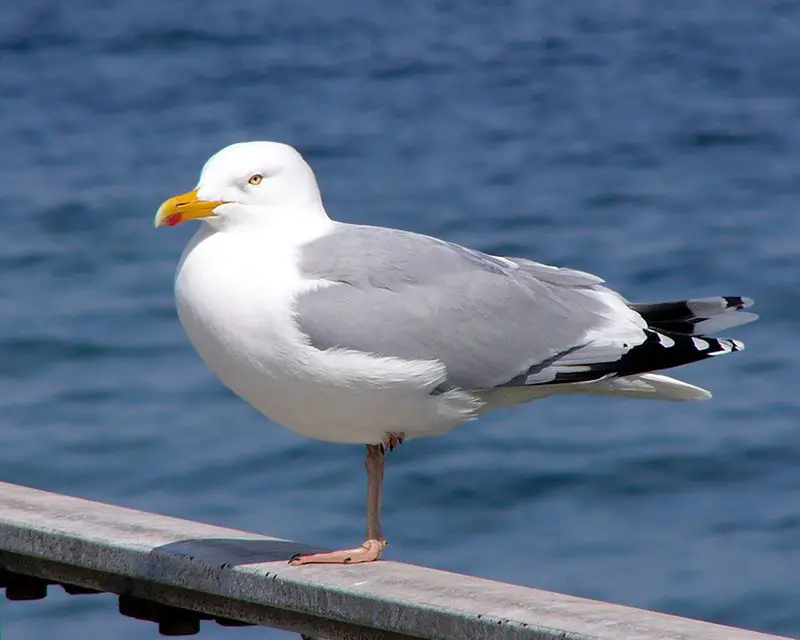
Gulls are a type of seabird in the family Laridae found worldwide. They are highly adaptable, often seen soaring above shorelines or near bodies of water.
Gulls have strong wings and long bills and vary greatly in size, colouration and behaviour from one species to another.
Some gull species feed on fish while others scavenge for food such as insects, small mammals or discarded human refuse.
Despite their different dietary habits they all share common traits including webbed feet which enable them to swim gracefully through the water after prey items like crabs or molluscs.
Gulls generally nest close to the shoreline where there is an abundance of available food sources making them excellent hunters that can live comfortably both on land and at sea.Scientific classification:
| Kingdom | Animalia |
| Phylum | Chordata |
| Class | Aves |
| Order | Charadriiformes |
| Suborder | Lari |
| Family | Laridae Rafinesque, 1815 |
Also Featured In: Most Common Birds in China, Birds You’ll Find in the Sea
2. Osprey
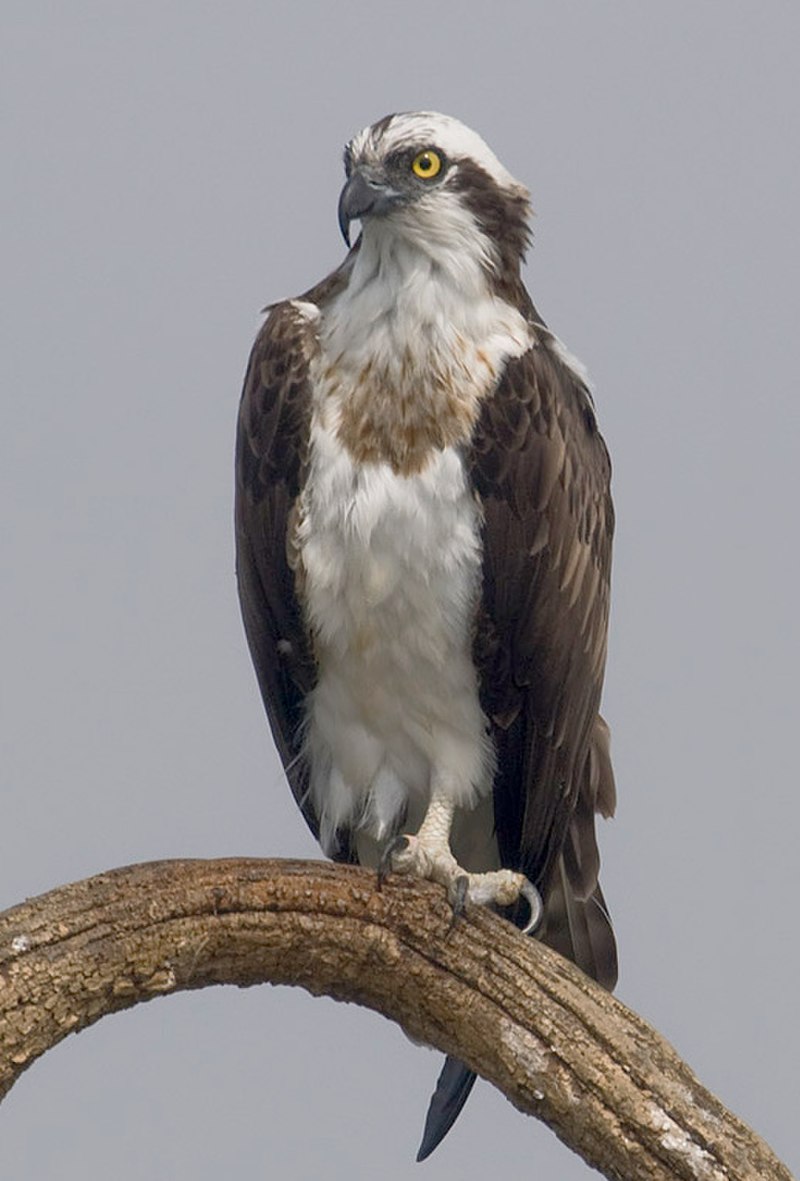
The Osprey is a majestic bird of prey with an incredibly wide habitat range. It has distinctive brown upperparts and greyish head and underparts, making it easily identifiable in the skies above many regions across the world.
With a wingspan of up to 180cm (71in) and body length reaching 60cm (24in), this large raptor specializes in hunting for fish, soaring high over rivers as well as coasts searching for its next meal.
Despite living near water sources, they can also be found inhabiting mountainsides or even woodlands, proving their incredible adaptability. An impressive species that truly deserves admiration.Scientific classification:
| Kingdom | Animalia |
| Phylum | Chordata |
| Class | Aves |
| Order | Accipitriformes |
| Family | Pandionidae |
| Genus | Pandion |
| Species | P. haliaetus |
Also Featured In: Most Popular Bird Species in North America, Ukrainian Birds You Should Know
3. Bar-Tailed Godwit
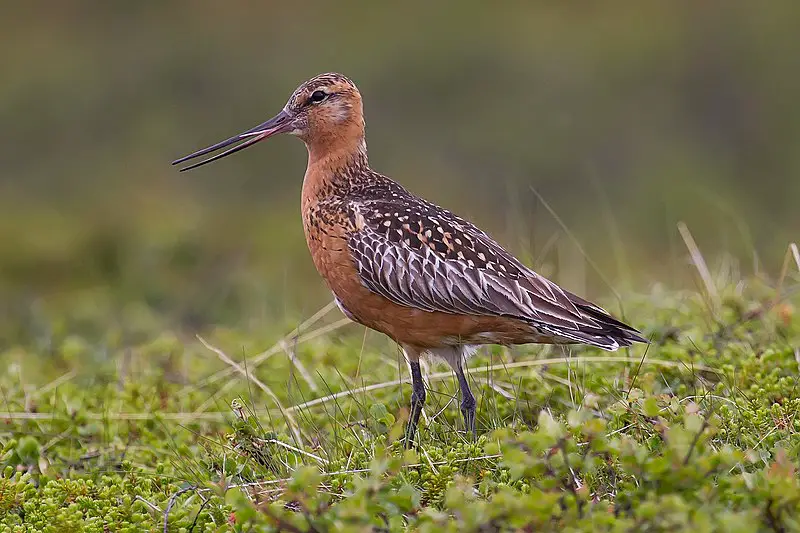
The bar-tailed godwit is a remarkable bird, both in its appearance and behavior. Its striking red breeding plumage stands out amongst the typical browns of other waders.
Long legs help it traverse coastal mudflats and estuaries where it forages on bristle-worms and shellfish.
It has an upturned bill that gives it further distinction from other shorebirds.
Bar-tailed godwits breed on Arctic coasts stretching all the way to Alaska during summer months before migrating south towards warmer temperate or tropical regions for wintering each year – quite incredible.
Despite their long migratory journeys they are still considered a common species due to large numbers making these arduous trips annually, although some populations have experienced declines recently.Scientific classification:
| Kingdom | Animalia |
| Phylum | Chordata |
| Class | Aves |
| Order | Charadriiformes |
| Family | Scolopacidae |
| Genus | Limosa |
| Species | L. lapponica |
Also Featured In: Russian Birds, Flight Birds You Should Know
4. Magnificent Frigatebird
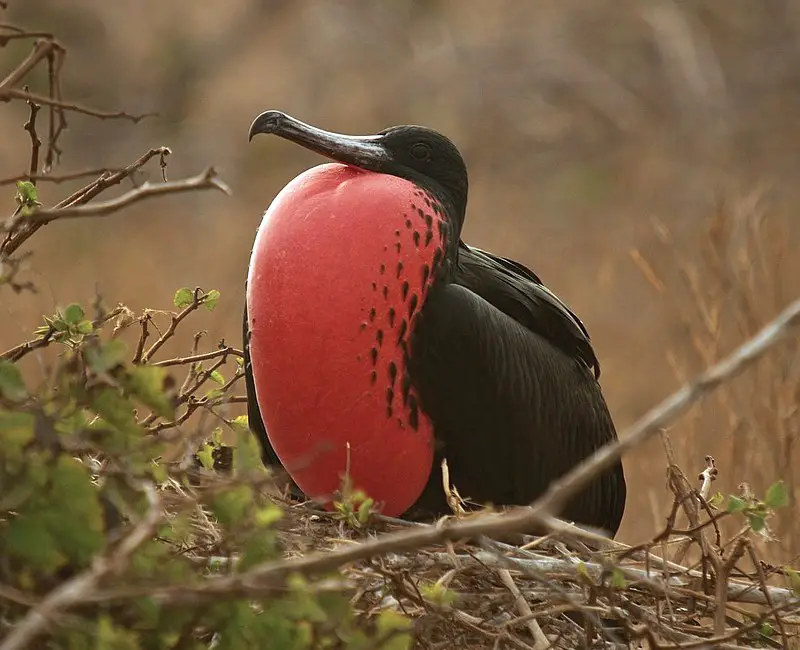
The Magnificent Frigatebird is the largest species of frigatebird, measuring between 89 and 114 cm in length and having a wingspan of 7-8 ft.
It can be found over tropical waters off America from northern Mexico to Peru on the Pacific coast, as well as Florida down south.
Its diet consists mainly of fish they take from other seabirds or snatch directly from the ocean surface while flying low above it.
They also feed on crustaceans and squid when available too.
This impressive bird has an unmistakable silhouette with its long pointed wings, forked tail feathers and male’s red gular pouch which inflates during courtship displays.Scientific classification:
| Kingdom | Animalia |
| Phylum | Chordata |
| Class | Aves |
| Order | Suliformes |
| Family | Fregatidae |
| Genus | Fregata |
| Species | F. magnificens |
Also Featured In: Top Birds Found in Mexico, Birds that Live in the Ocean
5. Smooth-Billed Ani
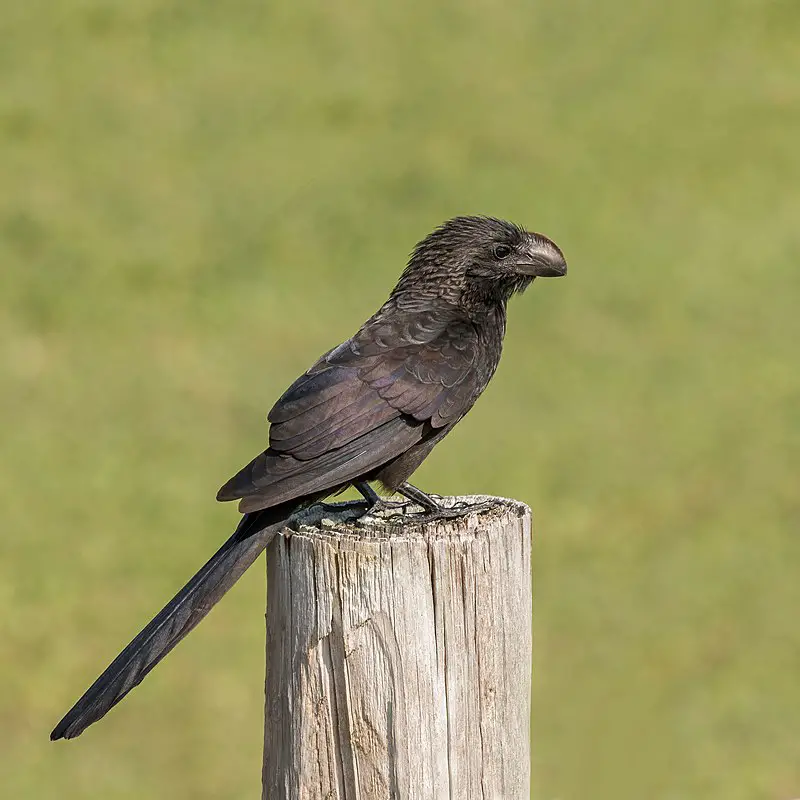
The Smooth-billed Ani is a species of bird in the cuckoo family, native to regions spanning from southern Florida and the Caribbean down through Central America, South America, and parts of Argentina.
They have even been introduced to Galapagos around 1960s where they may be impacting local wildlife due to their aggressive nature.
As its name suggests, these birds have smooth bills which are adapted for feeding on hard fruits or other items such as insects and lizards that it finds while scavenging around trees or ground level vegetation.
They usually form small flocks when out searching for food with males being slightly larger than females.
Overall this adaptable species is found in many habitats across its broad range but does best at low elevation open areas near water sources like marshes or swamps making them easier targets for human disturbance as well.Scientific classification:
| Kingdom | Animalia |
| Phylum | Chordata |
| Class | Aves |
| Order | Cuculiformes |
| Family | Cuculidae |
| Genus | Crotophaga |
| Species | C. ani |
Also Featured In: Common Birds in Colombia, Birds that You’ll Find in Puerto Rico
6. American Flamingo
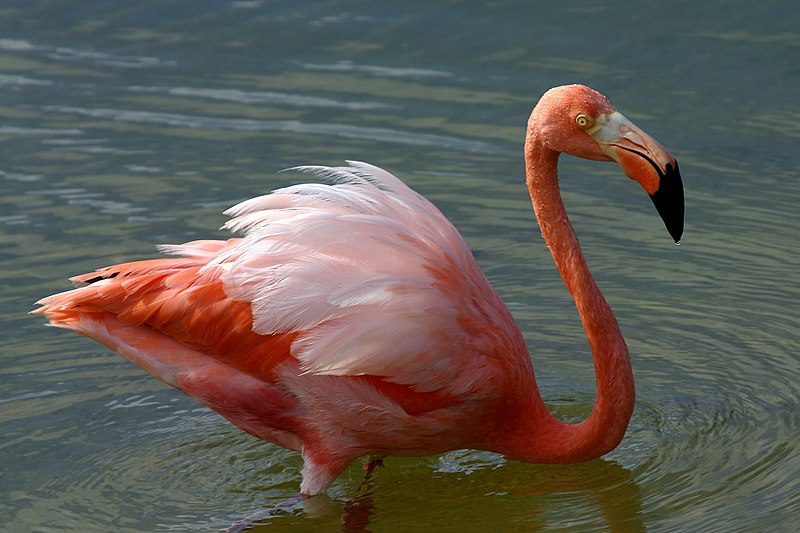
The American flamingo is a large species of bird found in the Neotropics. It has bright pink feathers and long legs, making it easily distinguishable from other species of flamingos.
The diet consists mostly of shrimp and small fish but they are also known to eat algae, aquatic insects, mollusks, crustaceans and seeds.
They live around coastal lagoons or salt ponds in colonies with thousands of birds nesting together on mud flats.
Flamingos build nests out of sticks that sit atop their feet as they wade through shallow waters looking for food during low tide periods when these areas become more accessible for feeding purposes.
These birds have an interesting courtship ritual involving neck stretching which looks like a dance to attract mates before breeding season begins in May-June each year leading to chicks hatching during July-August time periodScientific classification:
| Kingdom | Animalia |
| Phylum | Chordata |
| Class | Aves |
| Order | Phoenicopteriformes |
| Family | Phoenicopteridae |
| Genus | Phoenicopterus |
| Species | P. ruber |
Also Featured In: Birds You’ll Find in Zoo, Galapagos Birds You Should Know
7. Glossy Ibis
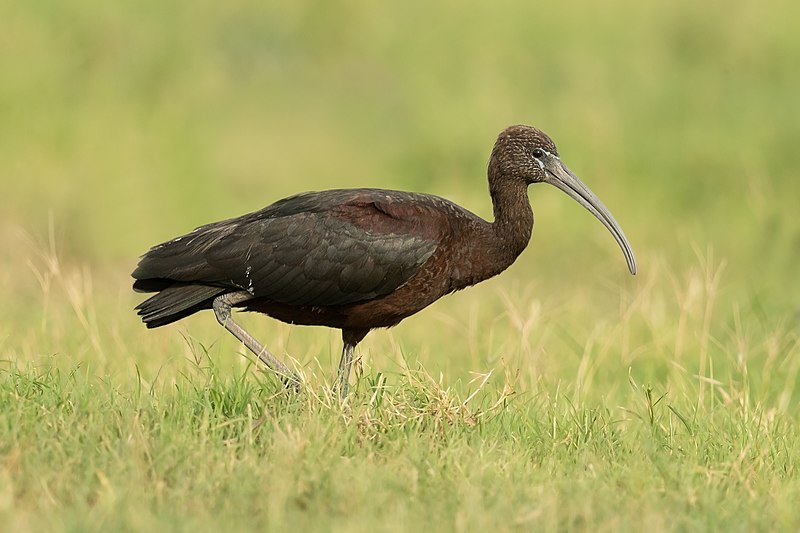
The Glossy Ibis is a water bird that belongs to the family Threskiornithidae. It has an unique bill in the shape of a sickle, which gave it its scientific name – Plegadis falcinellus.
It can be found widely across Europe, Asia and Africa, with scattered nesting sites in warm regions.
Its feathers are black-brown on top and chestnut brown from below; their wings have glossy greenish-purple sheen when seen from afar.
They mainly feed on small insects like grasshoppers, spiders or earthworms as well as crustaceans or amphibians caught while wading through shallow waters.
During breeding season they also consume plant material such as rice grains or corn kernels provided by humans near habitat areas where they nest.Scientific classification:
| Kingdom | Animalia |
| Phylum | Chordata |
| Class | Aves |
| Order | Pelecaniformes |
| Family | Threskiornithidae |
| Genus | Plegadis |
| Species | P. falcinellus |
Also Featured In: Uganda Birds Species, Turkey Birds You Should Know
8. Great Blue Heron

The Great Blue Heron is a majestic wading bird found in many parts of North America, Central America, the Caribbean and even as far away as the Galapagos Islands.
It has an impressive wingspan which can reach up to six feet wide. Its feathers are mainly bluish-gray with brownish streaks on both its neck and chest while its head displays white plumes.
The adult herons can also be identified by their yellow bill and legs.
They live near bodies of water such as lakes, marshes or rivers where they feed on fish using a spear like motion with their sharp bills.
An all-white population exists only in south Florida and the Florida Keys making it quite unique.Scientific classification:
| Kingdom | Animalia |
| Phylum | Chordata |
| Class | Aves |
| Order | Pelecaniformes |
| Family | Ardeidae |
| Genus | Ardea |
| Species | A. herodias |
Also Featured In: Common Birds in Canada, Water Birds Live around Us
9. Common Tern
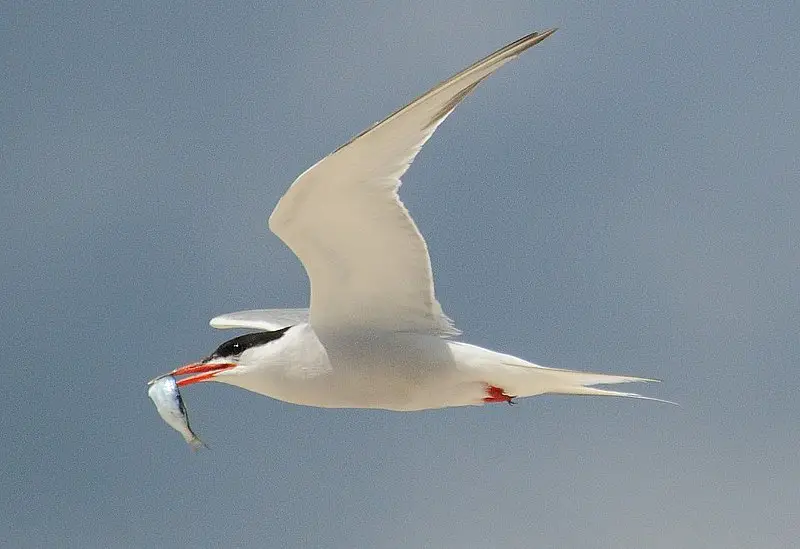
The Common Tern is a seabird in the Laridae family, found all over Europe, Asia and North America. It has a migratory nature, spending its winters in coastal tropical and subtropical regions.
Breeding adults have light grey upperparts with white to very light grey underparts featuring an orange-red beak and black cap.
They are known for their graceful flight as they hunt small fish or insects by diving into water from great heights.
During breeding season they build nests together on islands or sandbars using grasses and other materials to create them.
The female will lay two eggs which she incubates while her mate stands guard nearby; both parents take turns feeding the chicks until it’s time for them fly away.Scientific classification:
| Kingdom | Animalia |
| Phylum | Chordata |
| Class | Aves |
| Order | Charadriiformes |
| Family | Laridae |
| Genus | Sterna |
| Species | S. hirundo |
Also Featured In: Birds of Netherlands, Most Common Birds of Sardinia
10. Oystercatchers
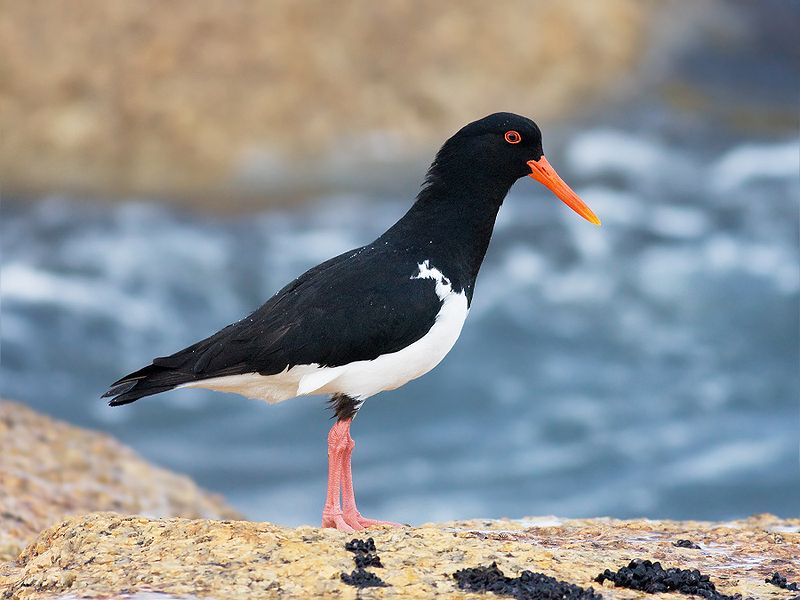
Oystercatchers are a family of waders forming the Haematopodidae, with one genus; Haematopus.
They live in coastal regions around the world excluding both polar and some tropical areas of Africa & South East Asia.
Eurasian, South Island & Magellanic oystercatcher species also breed far inland – breeding grounds being found much deeper than other members of the family.
They have long beaks used to feed on molluscs such as mussels, clams and oysters which they crack open using their strong bills.
Oystercatchers are usually quite vocal birds making various loud calls when disturbed or alarmed.
The males tend to display more brightly coloured plumage compared to females who share similar brown/black hues for camouflage purposes during nesting season.Scientific classification:
| Kingdom | Animalia |
| Phylum | Chordata |
| Class | Aves |
| Order | Charadriiformes |
| Suborder | Charadrii |
| Family | Haematopodidae Bonaparte, 1838 |
| Genus | Haematopus Linnaeus, 1758 |
Also Featured In: Best Birds Watching in Austria, Native Birds of Kazakhstan
11. Black-Bellied Whistling Duck
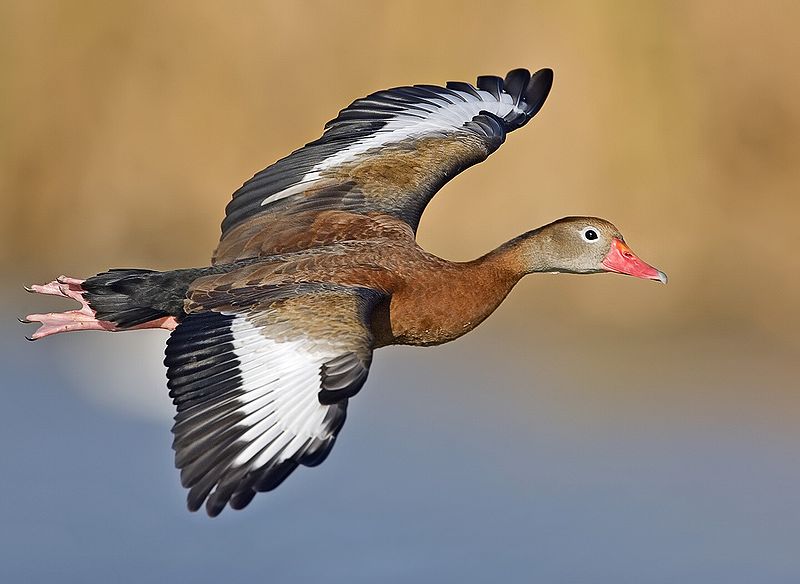
The Black-bellied whistling duck is a unique species of bird that can be found in the southern United States, Mexico, Central and South America. This small waterfowl has distinct black plumage on its belly which gives it its name.
Its call is also distinctive as it makes high pitched whistles to communicate with other members of its flock.
It prefers wetland habitats such as marshes, ponds and lakes where they feed on seeds and aquatic plants like wild rice or pondweed.
During breeding season these birds form monogamous pairs nesting in trees near bodies of water.
They are migratory birds but some may remain year round depending upon local climate conditions making them relatively common sights in certain areas during winter months when most other ducks have migrated further south for warmer weather.Scientific classification:
| Kingdom | Animalia |
| Phylum | Chordata |
| Class | Aves |
| Order | Anseriformes |
| Family | Anatidae |
| Genus | Dendrocygna |
| Species | D. autumnalis |
Also Featured In: El Salvador Birds, Birds that Live around Central Florida
12. Bridled Tern
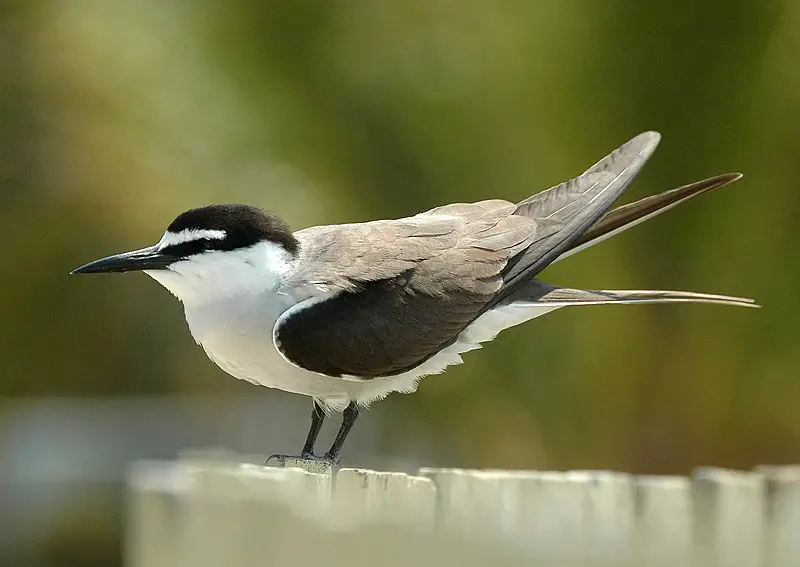
The Bridled Tern is a medium-sized seabird of the family Laridae, found in tropical oceans. It has an impressive wingspan of 77–81 cm and measures 30–32 cm in length – similar to that of the Common Tern.
Its scientific name originates from Ancient Greek; Onux meaning “claw” or “nail”, and Prion, which translates as “saw”. The specific anaethetus means ‘senseless’ or ‘stupid’.
These birds are elegant flyers with greyish brown upperparts and white underparts when they take off into flight, while their head appears black on top but turns to white below the eyes with a thin line between them.Scientific classification:
| Kingdom | Animalia |
| Phylum | Chordata |
| Class | Aves |
| Order | Charadriiformes |
| Family | Laridae |
| Genus | Onychoprion |
| Species | O. anaethetus |
Also Featured In: Oman Birds, British Virgin Islands Birds You Need to See
13. Roseate Tern
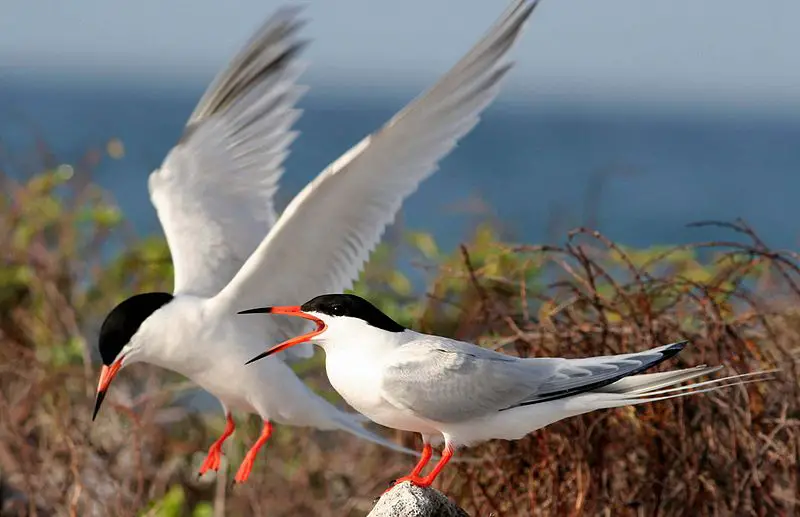
The Roseate Tern (Sterna dougallii) is a species of bird that belongs to the family Laridae. It gets its name from its pink breast in breeding plumage, which gives it a “roseate” appearance.
The genus Sterna comes from Old English and means “tern” while the specific dougallii refers to Scottish physician and collector Dr Peter McDougall (1777–1814).
This species was first described by George Montagu in 1813.
They are most common near coasts but can be found further inland occasionally too. These birds mainly feed on small fish like sardines, anchovies or herring as well as crustaceans when available.
They typically lay two eggs each year during their breeding season between May-September before migrating south for winter months.Scientific classification:
| Kingdom | Animalia |
| Phylum | Chordata |
| Class | Aves |
| Order | Charadriiformes |
| Family | Laridae |
| Genus | Sterna |
| Species | S. dougallii |
Also Featured In: Ireland Birds, Birds of Farne Islands
14. White-Tailed Tropicbird
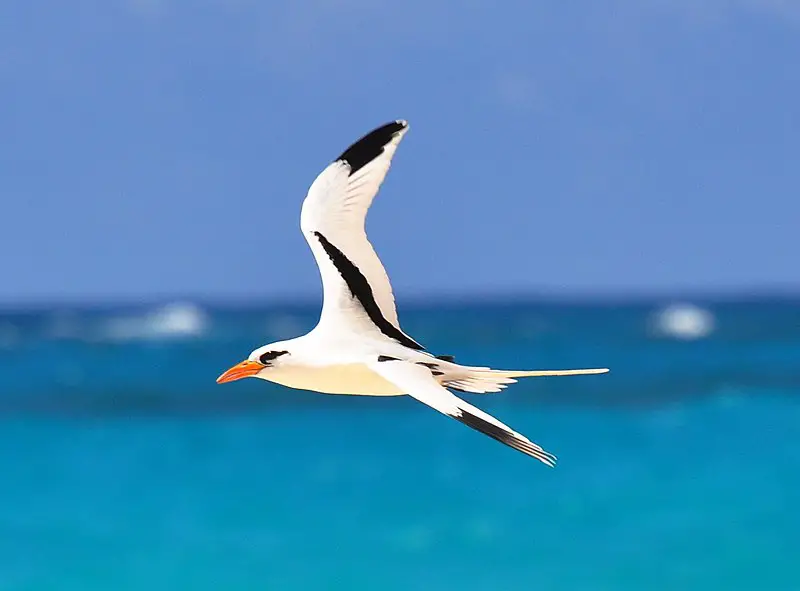
The White-tailed Tropicbird is a beautiful seabird that lives in the tropical waters of the Atlantic, Pacific, and Indian Oceans.
It is the smallest member of its order Phaethontiformes, measuring only 28 inches from head to tail.
Its wingspan can reach up to 45 inches wide. The bird has white plumage with black markings on its wings and tail feathers.
It also has an unmistakable long streamer which trails out behind them when they are in flight – a characteristic feature for all tropicbirds.
They nest mainly on remote islands throughout their range but have recently begun nesting on Little Tobago as well.
These birds feed primarily off flying fish or squid near the ocean’s surface during daylight hours before returning back home at nightfall.Scientific classification:
| Kingdom | Animalia |
| Phylum | Chordata |
| Class | Aves |
| Order | Phaethontiformes |
| Family | Phaethontidae |
| Genus | Phaethon |
| Species | P. lepturus |
Also Featured In: Mauritius birds, Birds of Kauai, Hawaii
15. Brown Noddy
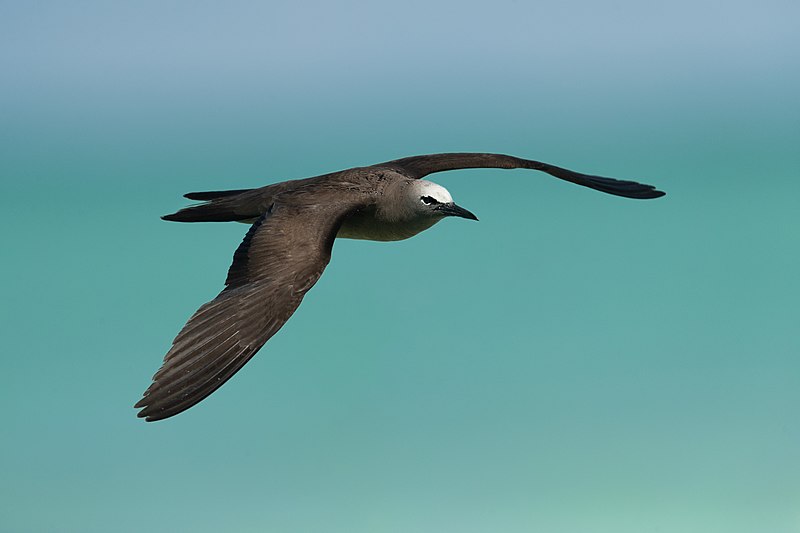
The Brown Noddy is a species of seabird in the Laridae family. It’s the largest of its kind, and can be distinguished from others by its dark brown plumage, which stands out compared to other noddies with black feathers.
Found around tropical oceans worldwide, it inhabits areas such as Hawaii and Australia all the way to Tuamotu Archipelago in Polynesia.
During breeding season they form large colonies on remote islands where their nests are constructed using twigs and leaves situated atop trees or shrubs – typically located near water sources like lagoons or estuaries so they have access to food items like small fish and squid that make up their diet.
As highly social birds they often engage in synchronised flying displays over nesting sites before returning back home at nightfall.Scientific classification:
| Kingdom | Animalia |
| Phylum | Chordata |
| Class | Aves |
| Order | Charadriiformes |
| Family | Laridae |
| Genus | Anous |
| Species | A. stolidus |
Also Featured In: Brown Birds of Florida, Martinique Island Birds You Should Know
16. Sooty Tern
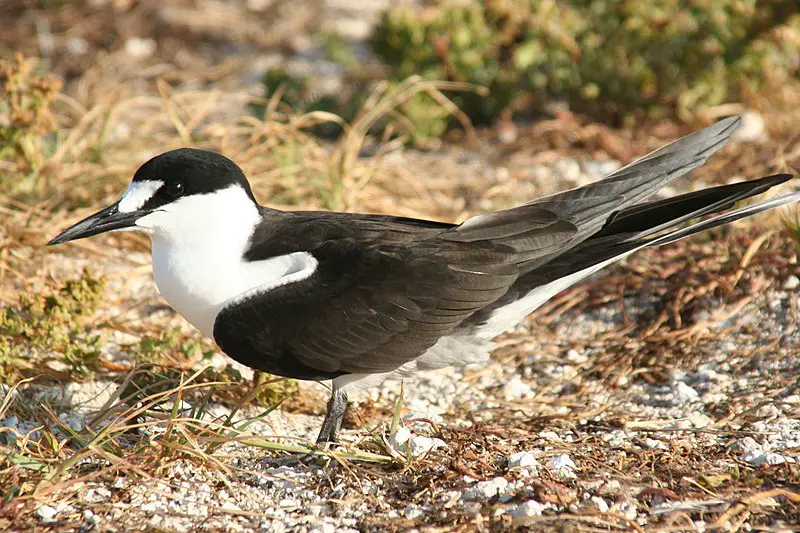
The Sooty Tern is a bird that lives in the tropics of all three major oceans. It is found mostly on remote islands where it returns to nest and breed during its seasonal journeys.
This member of the Laridae family has been described by Carl Linnaeus as Sterna fuscata, though more recently it was given its current name Onychoprion fuscatus.
The sooty tern has dark grey wings and back, with white underneath for camouflage against predators when flying over open ocean waters; they are also adept at diving underwater in search of food such as fish or crustaceans which make up their diet.
They live in colonies and usually lay two eggs each year which incubate for about four weeks before hatching into fluffy little chicks.Scientific classification:
| Kingdom | Animalia |
| Phylum | Chordata |
| Class | Aves |
| Order | Charadriiformes |
| Family | Laridae |
| Genus | Onychoprion |
| Species | O. fuscatus |
Also Featured In: Maldives birds, Birds That Live in Ascension Island
17. White-Crowned Pigeon
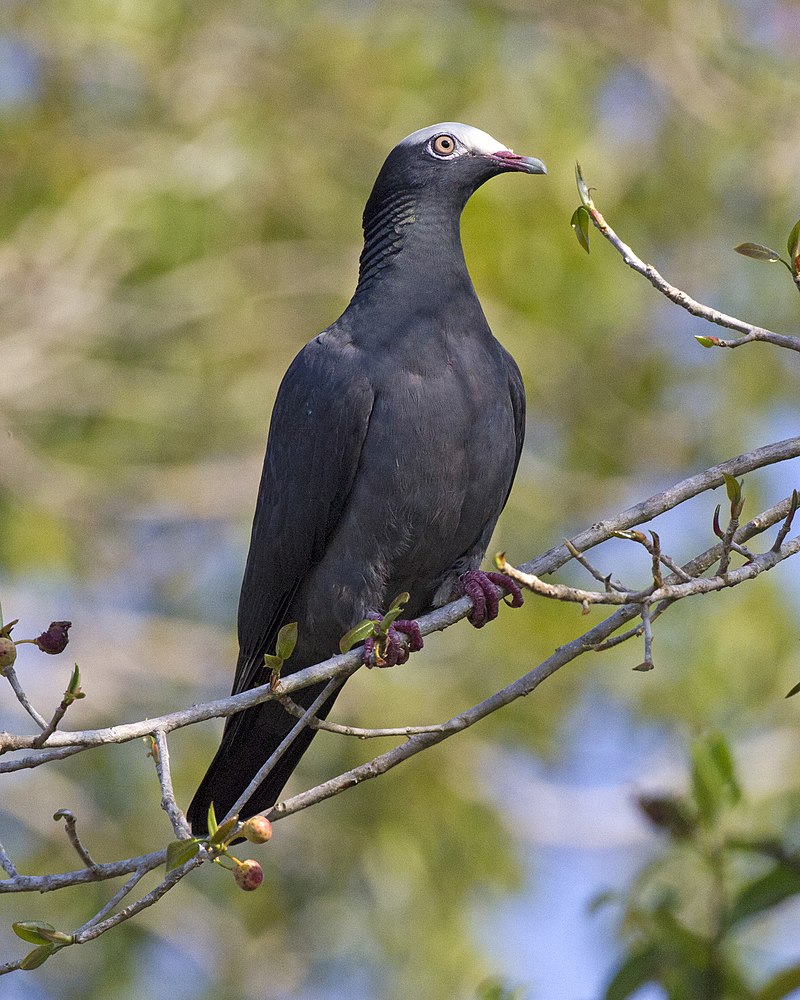
The White-crowned Pigeon is a species of bird belonging to the Columbidae family, widely found in the Caribbean. In the first half of the 18th century it was described as such.
This pigeon has been immortalized by artist John James Audubon through his watercolor painting featured in Birds of America published during early 19th century.
These birds primarily feed on fruits and seeds and have white crowns that make them easily recognizable even from afar.
The beauty of these birds makes them popular amongst birdwatchers all over the world who flock to observe their behavior while they eat or nest.Scientific classification:
| Kingdom | Animalia |
| Phylum | Chordata |
| Class | Aves |
| Order | Columbiformes |
| Family | Columbidae |
| Genus | Patagioenas |
| Species | P. leucocephala |
Also Featured In: Belize Birds, Winged Marvels of St Martin’s: A Bird Enthusiast’s Delight
18. Laughing Gull
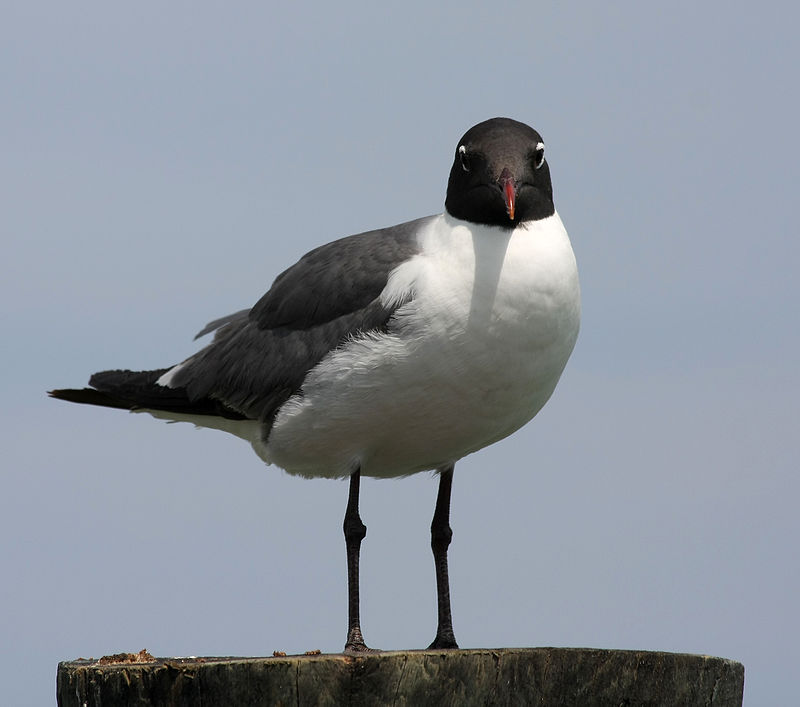
The Laughing Gull is a medium-sized bird with gray wings, black head and white underparts. It has bright red legs and bill which make it easily distinguishable from other gulls.
The name comes from its unique laughing call which can be heard in coastal areas throughout the Americas where they breed. They are opportunistic omnivores that feed on fish, carrion, insects or even garbage when available.
During breeding season these birds form large colonies along the Atlantic coast of North America as well as parts of northern South America and Caribbean islands.
There are two subspecies; L megalopturus found in Canada to Central America while L atricilla inhabits rest of their range..
These species have become more common inland due to human settlement near coasts creating ideal habitat for them but also making them scavengers around urban areas.Scientific classification:
| Kingdom | Animalia |
| Phylum | Chordata |
| Class | Aves |
| Order | Charadriiformes |
| Family | Laridae |
| Genus | Leucophaeus |
| Species | L. atricilla |
Also Featured In: Gulls Species, Birds You’ll Find in South Texas
19. American Herring Gull
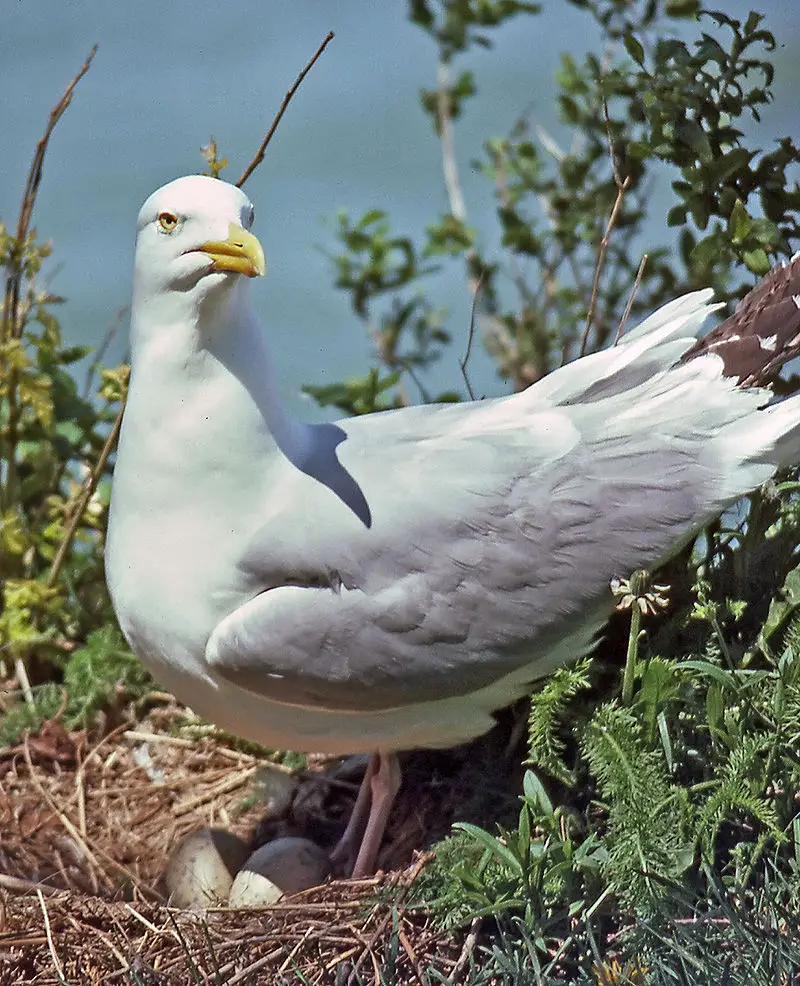
The American herring gull is a majestic bird that can be found in North America. It has a white body with grey wings and back, black wingtips dotted with white spots and pink legs.
Immature birds are darker than the adults, usually being a gray-brown colouring.
This species of seagull lives mainly on coasts or near large bodies of water where it feeds on fish, crustaceans and other marine life as well as garbage when available.
During the nesting season they make their nests high up in trees to help protect them from predators like foxes or raccoons who may try to steal eggs or chicks from them.
They have excellent vision which helps them spot prey even at long distances while flying over vast stretches of ocean searching for food sources to sustain themselves year round.Scientific classification:
| Kingdom | Animalia |
| Phylum | Chordata |
| Class | Aves |
| Order | Charadriiformes |
| Family | Laridae |
| Genus | Larus |
| Species | L. smithsonianus |
20. American Purple Gallinule
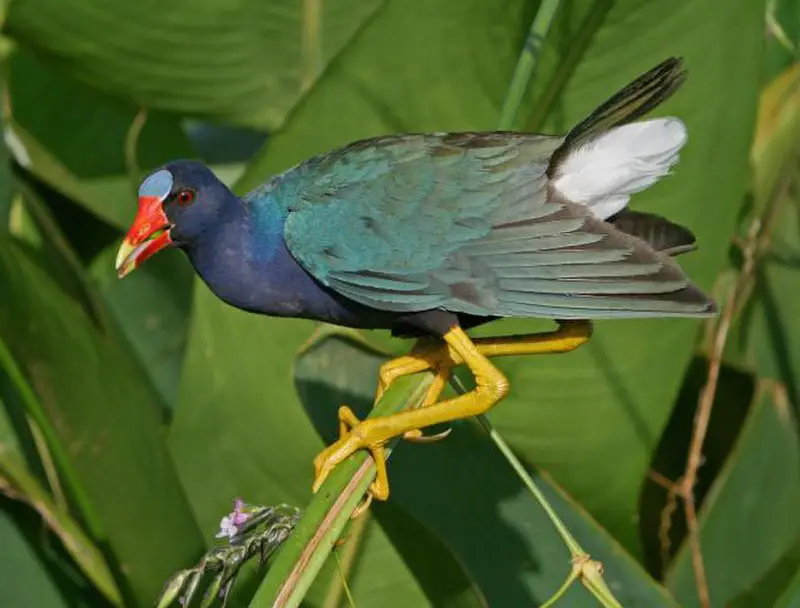
The American purple gallinule is a stunning bird found in North and South America. This species belongs to the order Gruiformes, which contains cranes, rails and crakes.
The family Rallidae classifies it as a rail species with its scientific name being Porphyrio martinica.
It is also known locally as the yellow-legged gallinule due to its striking plumage of greenish blue feathers on wings, back and tail along with bright red legs and bill.
Its environment includes freshwater marshes, swamps or paddy fields where these birds feed mostly on plants like water lilies or small invertebrates such as insects or molluscs.
These beautiful creatures are threatened by habitat destruction especially for agricultural purposes but conservation efforts are helping them survive despite this threat.Scientific classification:
| Kingdom | Animalia |
| Phylum | Chordata |
| Class | Aves |
| Order | Gruiformes |
| Family | Rallidae |
| Genus | Porphyrio |
| Species | P. martinicus |
Also Featured In: Florida Birds, Blue Birds You’ll Found around Us
21. Willet
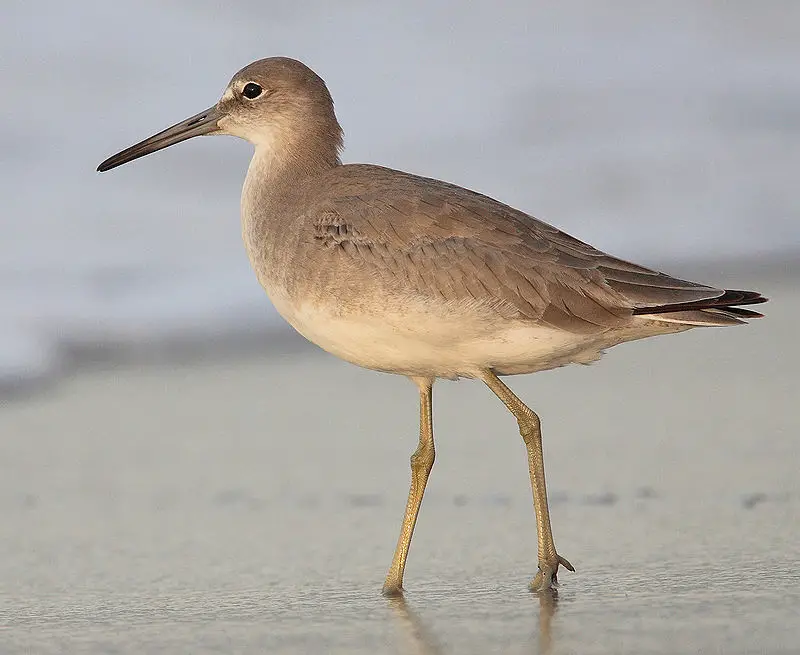
The Willet is a large and robust bird of the Scolopacidae family. It belongs to genus Tringa and it is much larger than its closest relative – lesser yellowlegs, which can be easily distinguished by its fine neck pattern.
The willet has brown upperparts with white patches on wings along with grey underparts. Its bill is thick, long and straight in shape having black coloration at tip while legs are also long but greenish-grey in colour.
They feed mainly on insects, worms or crustaceans that they find near coastal waters or wetlands as well as grains or seeds when available during winters.Scientific classification:
| Kingdom | Animalia |
| Phylum | Chordata |
| Class | Aves |
| Order | Charadriiformes |
| Family | Scolopacidae |
| Genus | Tringa |
| Species | T. semipalmata |
Also Featured In: birds of Delaware, Birds that can be Seen in Outer Banks